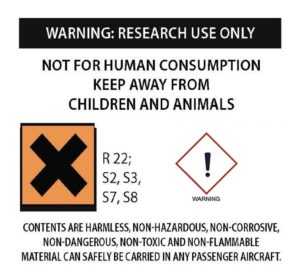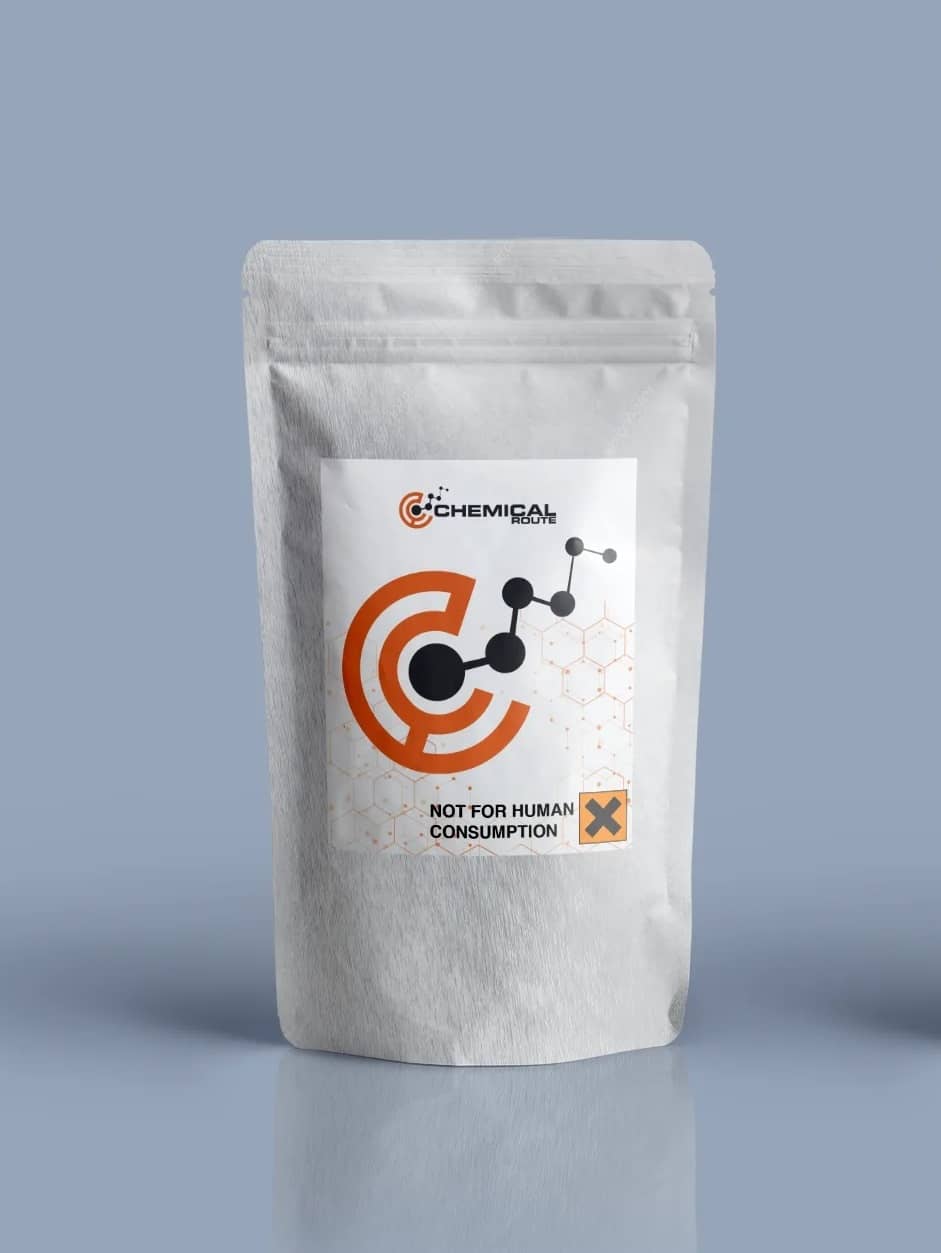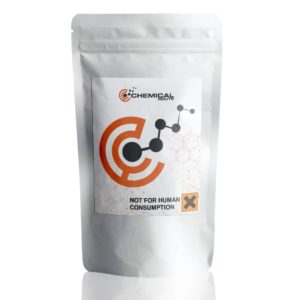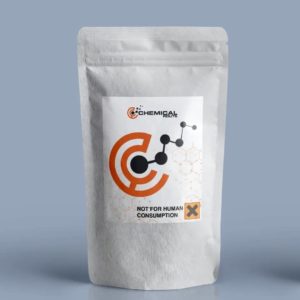Description
3′,4′-Methylenedioxy-α-pyrrolidinohexiophenone
Product information
IUPAC-name 1-(2H-1,3-Benzodioxol-5-yl)-2-(pyrrolidin-1-yl)hexan-1-one
Synonyms 3,4-MD-α-PHP, 3,4-MDPHP
Formal name 1-(1,3-benzodioxol-5-yl)-2-(1-pyrrolidinyl)-1hexanone,
Cas number 776994-64-0
Formula C17H23NO3
Molar Mass 289.375 g·mol−1
Formulation Powder
Solubility
- DMSO: 0.5 mg/ml
- Ethanol: 1 mg/ml
- PBS (pH 7.2): 10 mg/ml
Shipping & Storage Information
MDPHP known as 3′,4′-Methylenedioxy-α-pyrrolidinohexiophenone, 3,4-MD-α-PHP, 3,4-MDPHP is a stimulant under the cathinone family. It goes by the street name monkey dust and closely related to the potent stimulant MDPV and even with stronger effects and has been largely used as an alternative to MDPV. The only difference between the 3,4-MDPV and MDPHP is the addition of a single carbon to the alkyl chain.
Chemistry
Substituted cathinones are derivatives of the naturally occurring drug cathinone. MDPHP is a psychoactive substance that is linked to alpha carbon and beta carbon.
Pharmacology
MDPHP is believed to be a potent reuptake inhibitor that can increase the concentration of norepinephrine and dopamine in the brain. This effect, which can trigger the release of norepinephrine and noradrenaline, can be sustained for a long time. On the other hand, It can reduce the concentration of norepinephrine and dopamine in the brain by restricting the reuptake of these two neurotransmitters. This reduction in re-uptake leads to a prolonged concentration increase, which can trigger the release of norepinephrine and noradrenaline.
Although it has the same structural properties as other methylenedioxy phenylamine derivatives, MDPHP’s effects are mainly stimulant. It is similar to the milder effects of MDPV but with a lesser craving.
The toxicological and physiological properties of this compound have not been analyzed. Usage of this Chemical should be for research and forensic purposes only.
WARNING This product is not for human or veterinary use.

This product is only available to persons of 21 years old and above.
Hazard statement(s)
| H302 | Harmful if swallowed |
| H315 | Causes skin irritation |
| H319 | Causes serious eye irritation |
| H332 | Harmful if inhaled |
| H335 | May cause respiratory irritation |
| H336 | May cause drowsiness or dizziness |
| Precautionary statement(s) | |
| P264 | Wash hands thoroughly after handling |
| P280 | Wear protective gloves/protective clothing/eye protection/face protection |
| P305 + P351 + P338 | IF IN EYES: Rinse cautiously with water for several minutes. Remove contact lenses, if present and easy to do. Continue rinsing. |
| P337 + P313 | If eye irritation persists: Get medical advice/attention |
| P261 | Avoid breathing dust/ fume/ gas/ mist/ vapors/ spray |
| P271 | Use only outdoors or in a well-ventilated area |
| P304 + P340 | IF INHALED: Remove victim to fresh air and keep at rest in a position comfortable for breathing |
| P312 | Call a POISON CENTER or doctor/physician if you feel unwell |
| P403 + P233 | Store in a well-ventilated place. Keep container tightly closed |
| P405 | Store locked up |
| P501 | Dispose of contents/container to a licensed disposal company |





Reviews
There are no reviews yet.